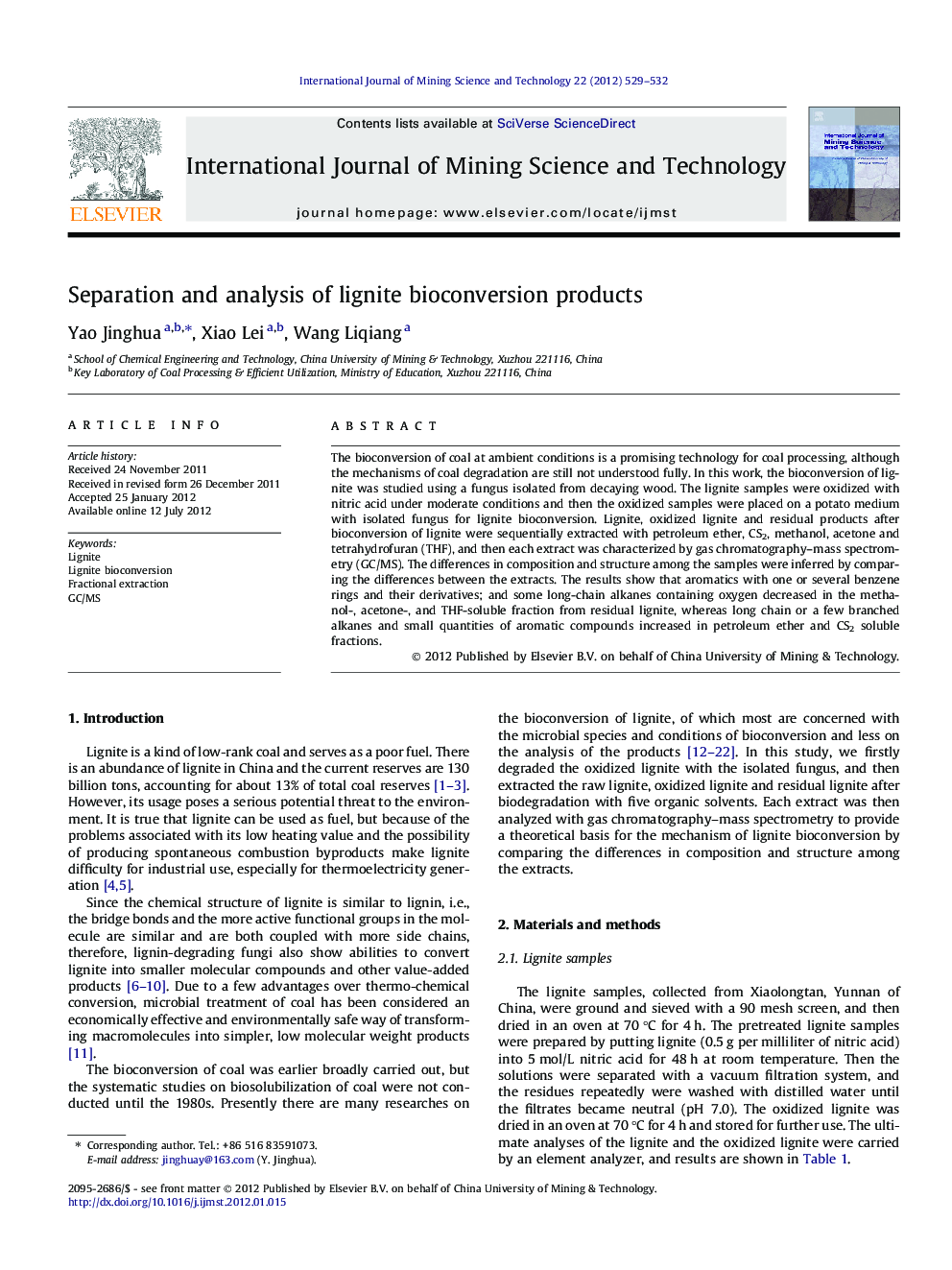| Article ID | Journal | Published Year | Pages | File Type |
|---|---|---|---|---|
| 276257 | International Journal of Mining Science and Technology | 2012 | 4 Pages |
The bioconversion of coal at ambient conditions is a promising technology for coal processing, although the mechanisms of coal degradation are still not understood fully. In this work, the bioconversion of lignite was studied using a fungus isolated from decaying wood. The lignite samples were oxidized with nitric acid under moderate conditions and then the oxidized samples were placed on a potato medium with isolated fungus for lignite bioconversion. Lignite, oxidized lignite and residual products after bioconversion of lignite were sequentially extracted with petroleum ether, CS2, methanol, acetone and tetrahydrofuran (THF), and then each extract was characterized by gas chromatography–mass spectrometry (GC/MS). The differences in composition and structure among the samples were inferred by comparing the differences between the extracts. The results show that aromatics with one or several benzene rings and their derivatives; and some long-chain alkanes containing oxygen decreased in the methanol-, acetone-, and THF-soluble fraction from residual lignite, whereas long chain or a few branched alkanes and small quantities of aromatic compounds increased in petroleum ether and CS2 soluble fractions.
